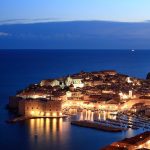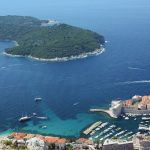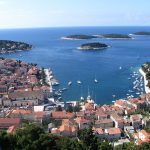TCN continues with the alphabet series with a nod to several charming islands, a medieval bishop and some mouth-watering fish on January 30, 2018
G is for…
girice and the G-crew
Let’s see who has been paying close attention to the alphabet series so far: how many species of fish are populating the Croatian Adriatic? (Those who skipped last week’s lesson can find the answer here.) When I checked the list, it turned out the Croatian aquatic life provides more material for this feature than I would have thought, but we’ll keep it down to the most prominent members of the fish community and turn to our glossary for some help with translation. My favourite G, girice – little picarels you can dust with some flour and fry for your daily dose of Omega-3. Gof, known as the greater amberjack in English, is a marine predator that can grow up to 2 metres in length and as such represents a coveted trophy for big-game enthusiasts. Amberjack is also considered a fish of the highest quality from a nutritional point of view, being rich in protein and having a small percentage of fat.
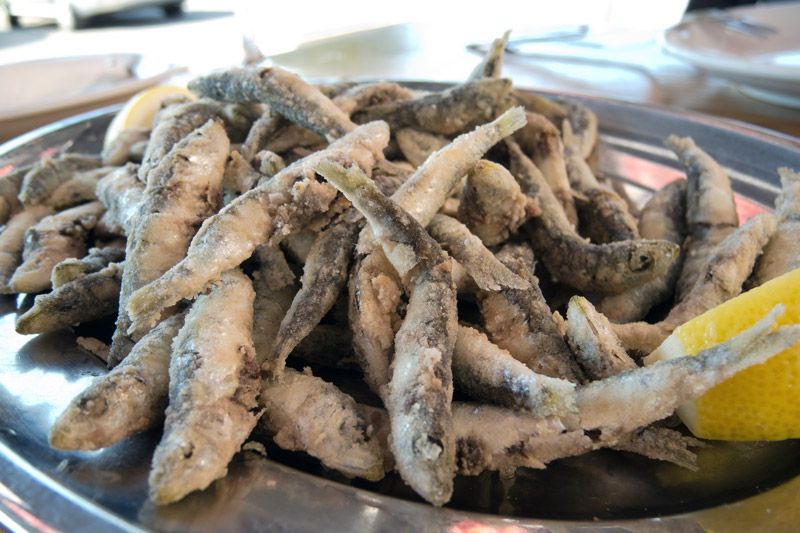
Girice
Glavoč, who you might know as gobius, is a small species which doesn’t exactly hold a prestigious reputation in the Mediterranean cuisine, but can be fairly tasty if you manage to get your hands on some larger specimen. They’re said to have a somewhat unappealing physique, but I don’t think that’s fair, as we have a much uglier example to compare them with: grdobina, known as monkfish or angler. A fish so grotesque, it was named after its unattractive looks, as grdo stands for ugly or nasty in Croatian. Just like in high school, once you get marked with an unflattering nickname, there’s not much you can do about it. The bizarre grdobina doesn’t seem to mind the mockery, instead enjoying the reputation of one of the most popular fish on the Croatian seafood menu. If you manage to overcome your initial reaction to its, erm, friendly face, you’ve got yourself a delicious meal down the line.
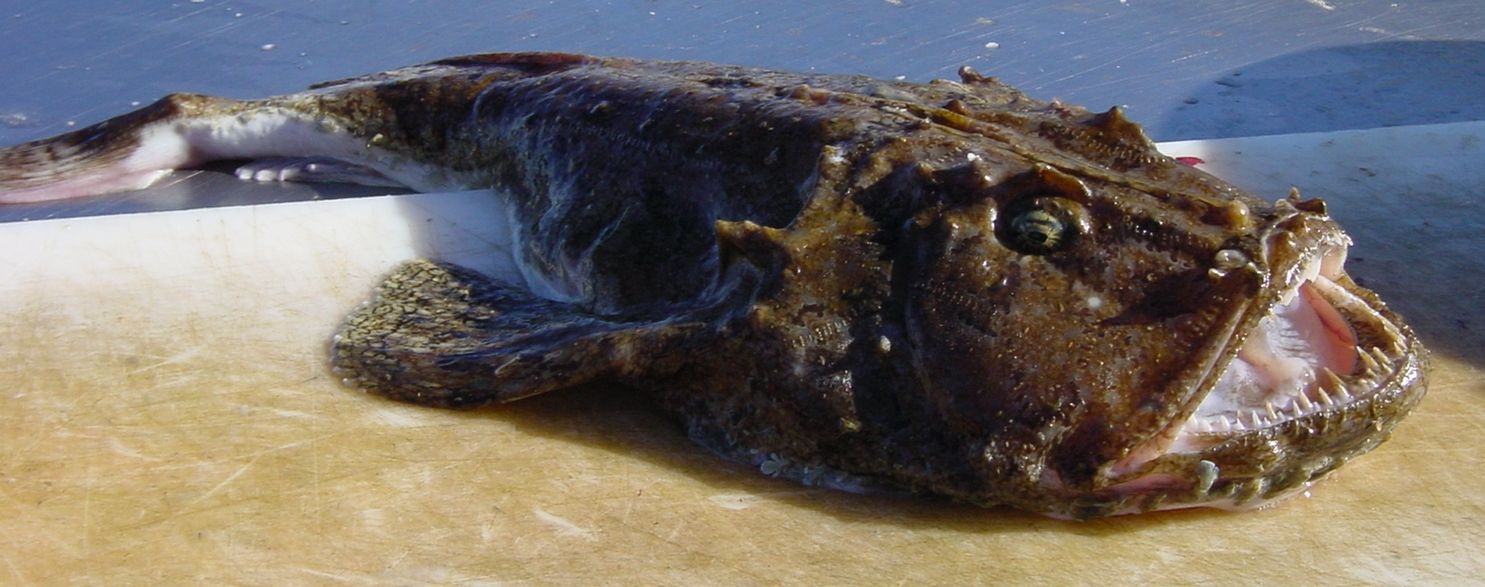
Grdobina
gregada
Now that I’m thinking about food… how about using those fish to make a gregada? The traditional Dalmatian dish was supposedly brought over by the Greeks in the ancient times; try a gregada once, and you’ll understand why it’s been passed on for thousands of years. It’s an immensely rewarding dish, easy to throw together as it calls for a single pot and only a few ingredients – fish, sliced potatoes, and a dash of olive oil, onion, garlic and parsley. The finer version of gregada calls for mouth-watering species such as sea-bream, grouper and our new friend grdobina (and a couple of clams and scampi if you’re feeling crazy), but you can test your culinary skills on a budget and opt for cheaper ingredients instead. Feel free to try it with red mullet and hake, but whichever species you decide on, go with larger specimen with as few bones as possible. Watch how gregada gets made in the following video:
So simple! Here’s a short rundown of the process: sauté some finely sliced onions on olive oil, add sliced potatoes and top them with fish. Pour a glass of olive oil over the fine display, add salt, pepper and other spices to taste, then add water to cover the potatoes – but bear in mind the fish must not be fully immersed, as you’d end up with soup instead of gregada. Cook on high heat until the potatoes are done, gently shaking the pot occasionally – no stirring! Leave it to rest for ten minutes, then serve with some bread on the side and a glass of white wine. Bon appetit!
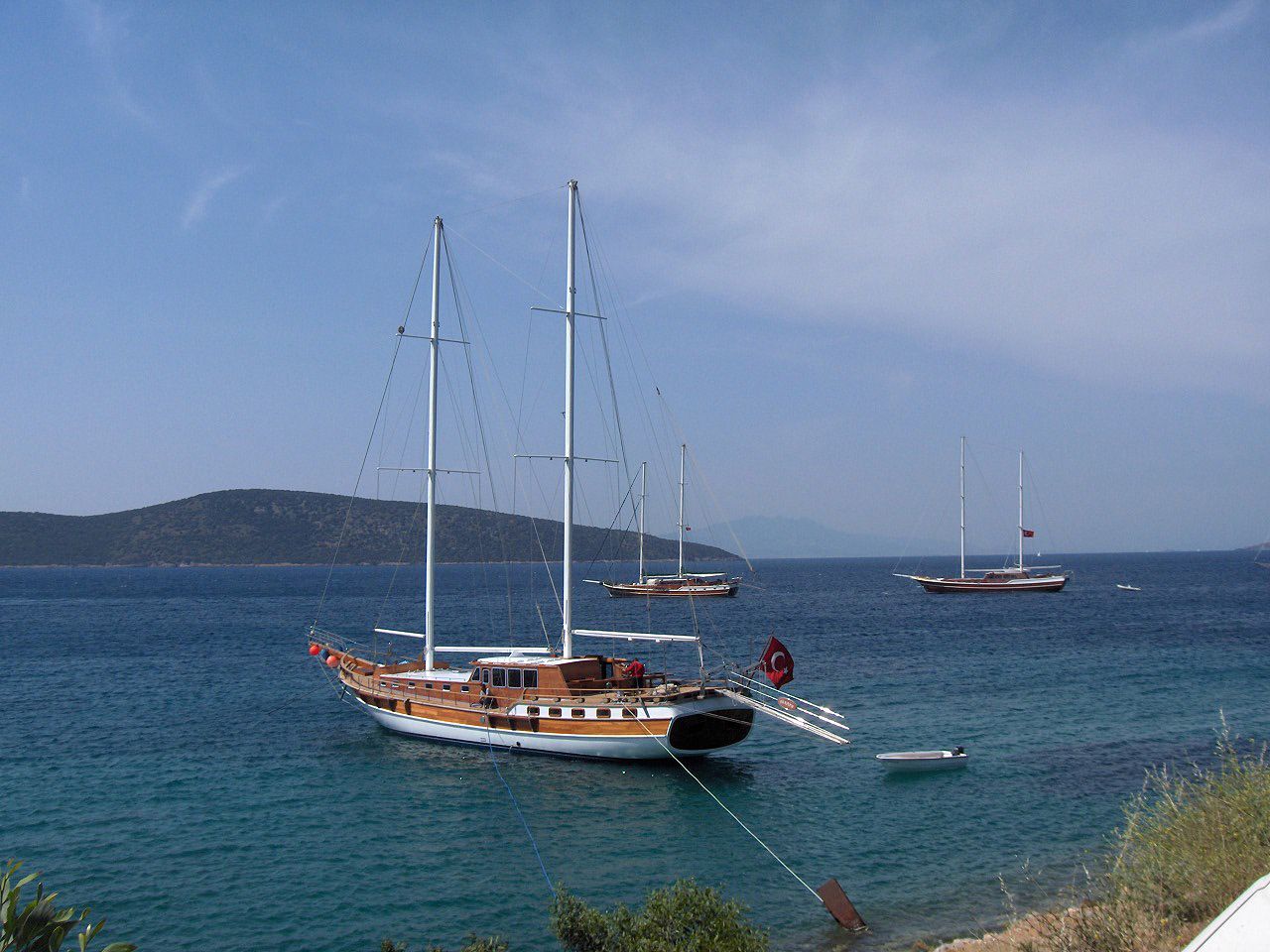
gulet
A gulet is a two-masted (or sometimes three-masted) traditional wooden vessel originating from Turkey, but nowadays popular all over the Mediterranean – especially in Croatia, where it’s increasingly used in charter. Modern gulets usually measure from 14 to 35 metres in length and are powered by diesel fuel. The etymology behind the term gulet is somewhat murky: the word probably originates from the Celtic goéland, which became gouëlette in French, turned to goléta in Italian and found its way to Turkey as a gulet. These days, gulets are modeled after the Bodrum type schooner which has been gradually developing since the 70s, when charter started to become increasingly sought after within the tourism industry. One of the loveliest examples you can see on our coast is Gulet Linda – you can find out why the delighted guests fell in love with this traditional boat here.
Galešnjak
It’s impossible to choose a favourite from the Croatian island portfolio, but one little gem stands out owing to its unique outlook: Galešnjak, a member of the Zadar archipelago located close to Pašman island, rapidly became a darling of the wider public once it became known it’s shaped like a heart. Back in 2009, Galešnjak was first featured on Google Earth, turning into an international sensation practically overnight. Dozens of couples have been reaching out to the island’s owner ever since, craving a romantic holiday on the so-called Island of Love. Considering that Galešnjak is uninhabited, it makes for a perfect destination for an interrupted getaway.
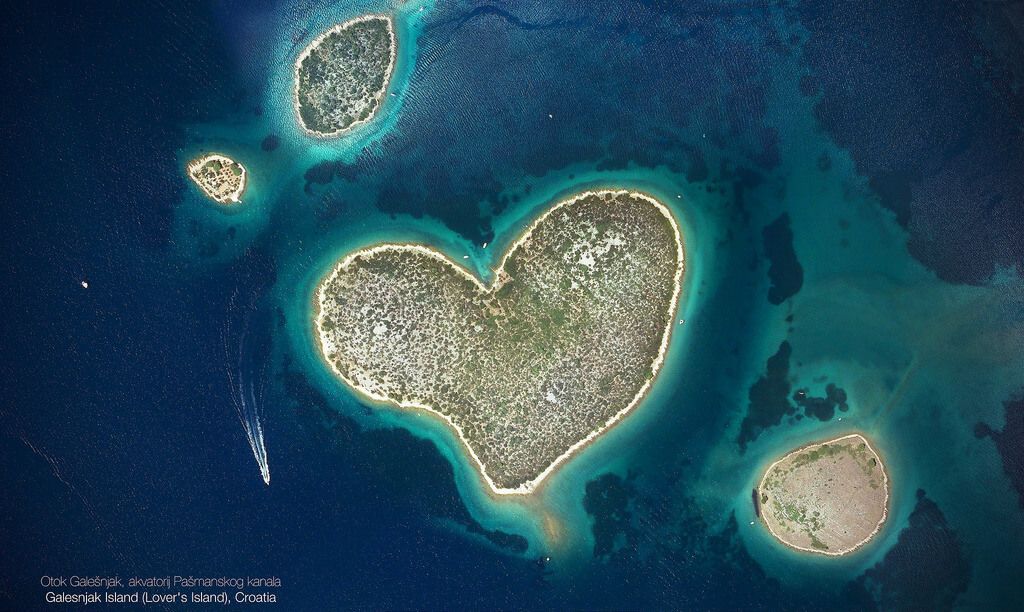
Galevac
Continuing with the island theme, a nod to Galevac, a charming islet cozying up to its bigger brother Ugljan. Galevac is located just 85 metres away from the town of Preko; while the waters on that particular spot are fairly shallow and you might be tempted to walk the distance in your bathers, you’ll always find a guy and his boat ready to take you to Galevac for a small fee. The islet is worth visiting, as it houses the church of St. Paul and the adjacent monastery originating from the 15th century. The Franciscan order established the monastery on Galevac in 1446 when a nobleman from Zadar named Bartolomeo da Milano gifted them the islet. Historians say that Galevac was previously populated by the Pauline monks, the complex getting named after their patron saint, St. Paul the First Hermit. The islet thrived as a distinguished centre of religious and cultural life for centuries, shortly serving as a lazaret in the 17th century when the area was affected by a plague epidemic. If you ever find yourself on Ugljan island, go to Preko, find that guy with a boat, and go explore this gorgeous piece of land – take a look around the monastery, then stick around for a leisurely day on one of Galevac’s pristine beaches.
Preko and Galevac island
Grk
Grk, also called Grk Bijeli, is a white grape variety indigenous to the village of Lumbarda on Korčula island. While its name literally translates to Greek, it also stands for bitter in the local dialect, shortened from gorak in Croatian standard. The wine, fortunately, isn’t bitter but better described as dry and high in acidity. As the variety only has female flowers, it must be planted together with another variety in order to ensure pollination; in Grk’s case, it’s mostly combined with Plavac Mali.
Goli otok
Not every island is idyllic: Goli otok, whose name literally translates to barren or naked island, used to house a high-security prison from 1949 to 1989. It’s located on the northern Adriatic, close to the island of Krk, and apart from the notorious 50-year stretch in the 20th century, it has never been inhabited. In 1949, Yugoslav authorities turned the island into a top-secret prison and labour camp for political prisoners who were subjected to forced labour in inhumane conditions: temperatures up to 40 degrees Celsius in summer, merciless bura wind and freezing rain in winter. It’s estimated that 16.000 prisoners served on Goli otok, up to 600 of them dying on the island; other sources claim 4000 inmates were killed while serving their sentence. The prison was closed in December 1988 and abandoned in 1989, being left to ruin until 2017 when the island hosted a youth summer camp organised by Magis association. Three programmes took place on Goli otok in July 2017: a work and eco camp, a historical-political school and spiritual exercises, aiming to “make Goli otok a permanent place of memory of the pointless and dangerous totalitarian ideas, but also encourage forgiveness”.

Goli otok / Romulic and Stojcic
Glavat
One more island item to lighten up after the Goli otok story: Glavat is a tiny islet and the easternmost part of the Lastovo archipelago. Its closest neighbours are Lastovo (9 nautical miles), Korčula (12 nm) and Mljet (8 nm), leaving Glavat all alone, stranded at the open sea. Legend has it we have to thank the Greek pantheon for this Dalmatian gem: the story says that the Greek gods were once trying to settle a very important matter, discussing which of the following islands was the most beautiful – Lastovo, Mljet, or Korčula. To put an end to the debate, Poseidon sent out one of his aides to scope out the archipelago and report back with his opinion; the aide surfaced at the exact spot where Glavat is nowadays located and was caught dead in his tracks, admiring the islands, unable to decide which one was the most appealing. The gods weren’t happy with his failure to comply, punishing the indecisive aide by turning him to stone – the islet of Glavat.
While geologists might have a thing or two to say about this very scientific story of origin, the vast waters of the archipelago sprinkled with deserted islets and reefs do have a certain mythical appeal. In the middle of the 19th century, the Austro-Hungarian authorities passed a decision to build a network of lighthouses on the eastern Adriatic to make it easier for ships to dodge numerous rocks, reefs and shallow waters in the dark. A lighthouse was thus built on Glavat and started operating on November 17, 1883, offering a home to four lighthouse keepers and their families. This is how a formerly vacant parcel of stone welcomed its first inhabitants; in 1931, the census cited fourteen residents. As time went by, the small population declined along with the need for lighthouse keepers: seven residents in 1971, three in 1981. The lighthouse was automatised with the help of solar panels in 1994, causing Glavat’s residents to leave the island in search of a better future. While the islet is still administratively considered a settlement, the census of 2001 cited 0 residents, 0 households.
Gregory of Nin
If you’ve ever been to Split, you’ve surely met this historical figure. Gregory of Nin, known as Grgur Ninski in Croatian, was a medieval bishop known for two things: opposing the Pope and introducing the national language in the religious service. He was one of the first bishops of the Nin Diocese, active in the first decades of the 10th century under the protection of King Tomislav. As masses were mostly held in Latin in that point in time, the majority of the population was unable to understand the substance of religious service; switching the official language to Croatian helped to enforce Christianity as a national religion and had immense impact on the development of language, culture and education.
You’ll find the most famous tribute to Gregory of Nin outside Diocletian’s Palace, on its northern side in front of the Golden Gate. Made in 1929 by the renowned sculptor Ivan Meštrović, the massive statue was first erected in the Peristyle, then removed from the city by the Italian forces in 1941; it was finally installed in its current location in 1954. Rubbing Gregory’s toe is believed to bring good luck, and judging by the polished state of the bronze foot, no local or tourist in passing have ever missed the opportunity to appeal to fate. Gregory has two more sculpted tributes in Croatia, in Nin and Varaždin.
Galeb, vol.1: Tito’s yacht
First of all, galeb means seagull in Croatian, but there’s no sense to dedicating an entire item to this staple feature of life on the Adriatic coast – you’ll see plenty of them wherever you turn. If you don’t see them, you’ll definitely hear them, their wailing leaving you to wonder whether the loud yapping you’ve just heard was a crying baby or a cat in heat. Nope, just seagulls – so instead, let’s focus on two other distinguished galebs of the Adriatic.
The first is a vessel, a Yugoslav Navy training ship which was used as an official yacht of the late marshal Josip Broz Tito. ‘Galeb’ was built in 1938 in Genoa as an auxiliary cruiser; after it was sunk in 1944 by the Allied forces in Rijeka, the ship was raised from the sea and taken to Uljanik shipyard in Pula for reconstruction, going on to become a part of the Yugoslav Navy in 1952. Tito spent a total of 308 days on board in the next 27 years, using it to host parties, foreign visits and diplomatic meetings. By Tito’s death in 1980, 102 statesmen from all over the world were invited to stay on Galeb, including Nikita Khrushchev, Muammar Gaddafi and Indira Gandhi. The ship also saw some famous visitors such as Elizabeth Taylor and Richard Burton, the latter having played Tito in the 1973 The Battle of Sutjeska, the most expensive film production in the history of Yugoslav cinema.
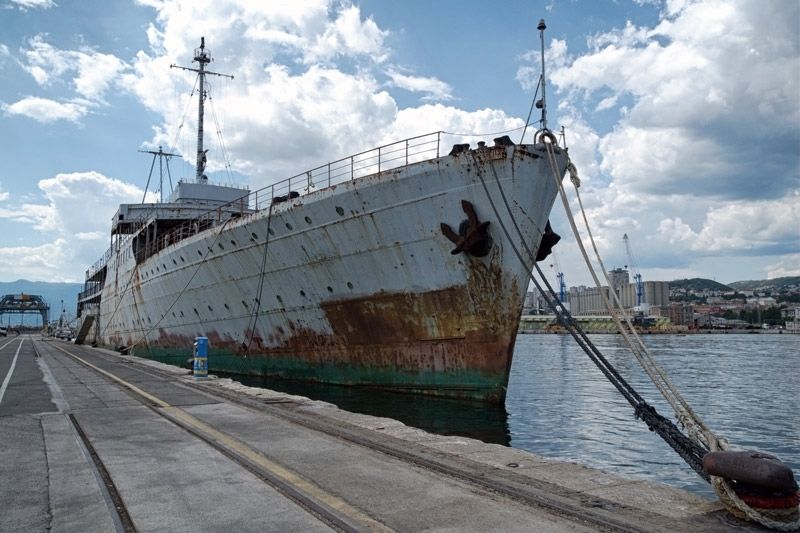
After Tito’s death, Galeb had changed several owners before it was bought by the City of Rijeka in 2009; it’s currently moored in Rijeka, awaiting an overhaul. As part of the city’s winning bid for the European Capital of Culture 2020, EU funds of 4.5 million euro were granted to Rijeka for a renovation project that will turn Galeb into a history museum, with part of the spaces used for commercial activities.
Galeb, vol.2: the social institution
The human version of galeb would best be described as a Casanova spiced up with some distinctive Dalmatian character traits. Every summer, thousands of tourists flock to the Adriatic coast; those among them who are female and attractive are the ones that are most likely to get acquainted with galebs. The local dating scene tends to get a bit boring after a while, and the annual temporary inflow of new faces regularly inspires young Dalmatian men to mingle with the crowd, attempting to – quite literally – charm the pants off lovely foreign ladies. Incessant courting, a fine display of gentlemanly manners, a talent for sweet-talking and a couple of impressive dance moves, and the newcomers won’t stand a chance. Makarska paid tribute to the iconic Dalmatian players with a statue depicting a local galeb named Jure with a tourist under his arm.
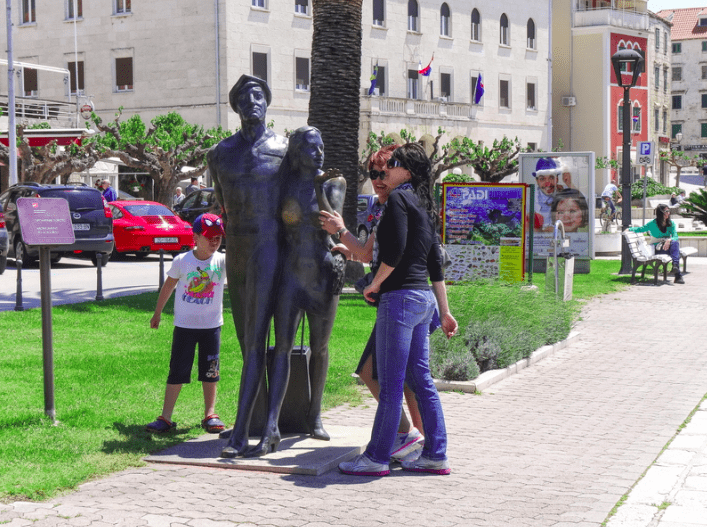
Read more about the famous Dalmatian galebs here.


